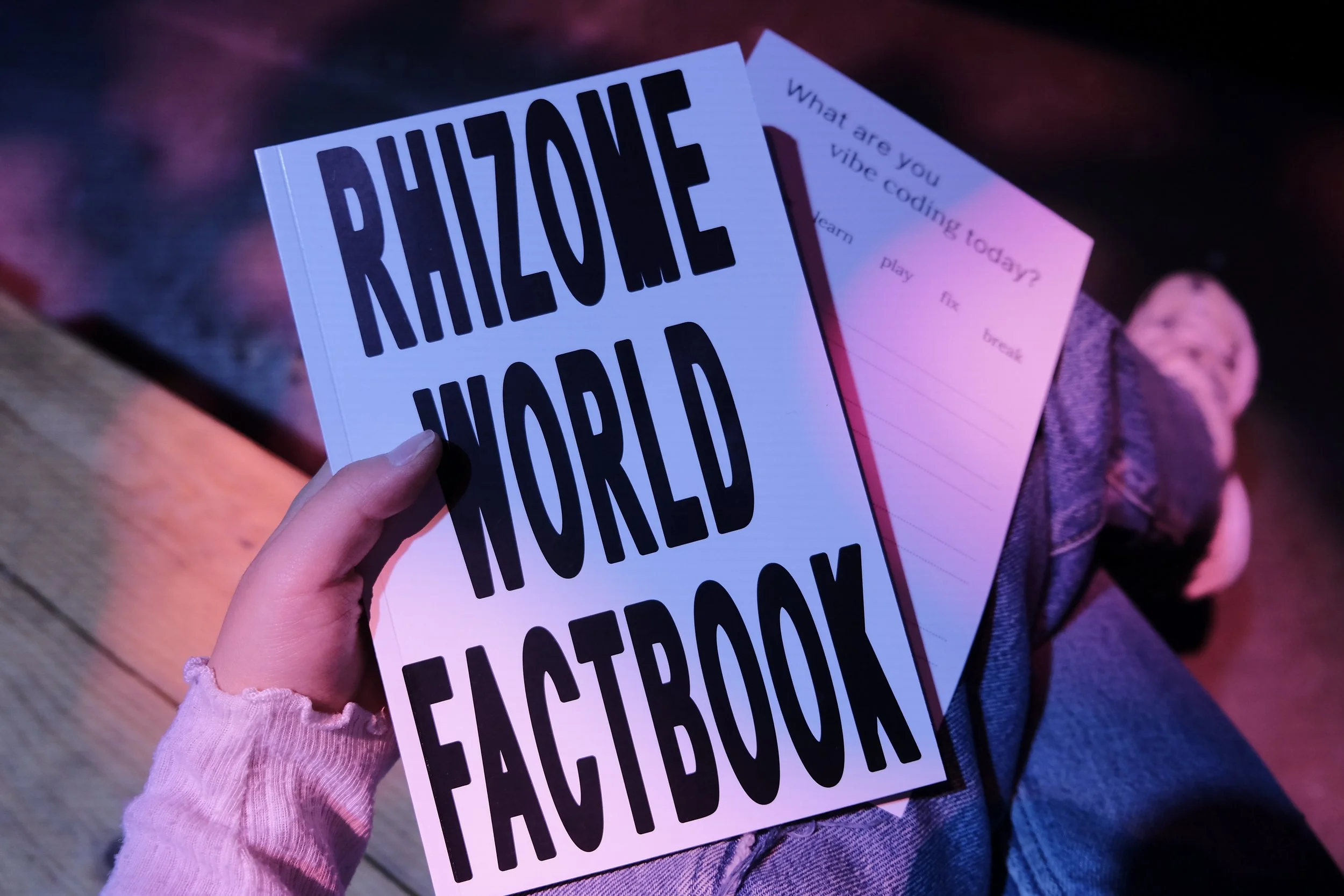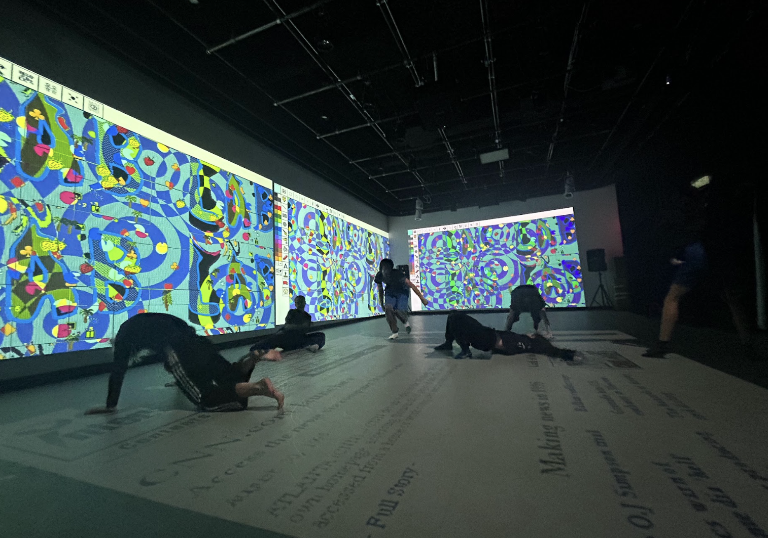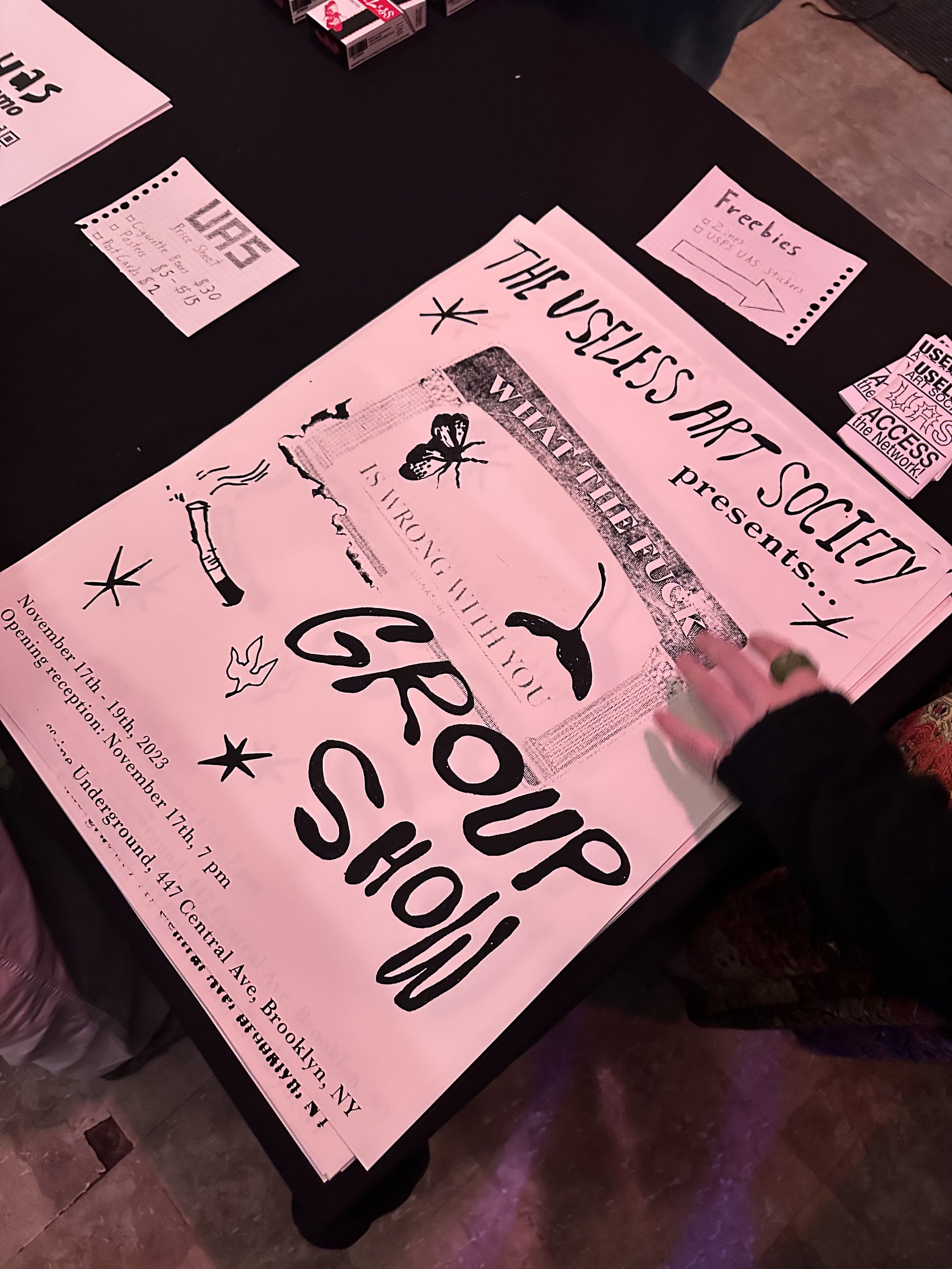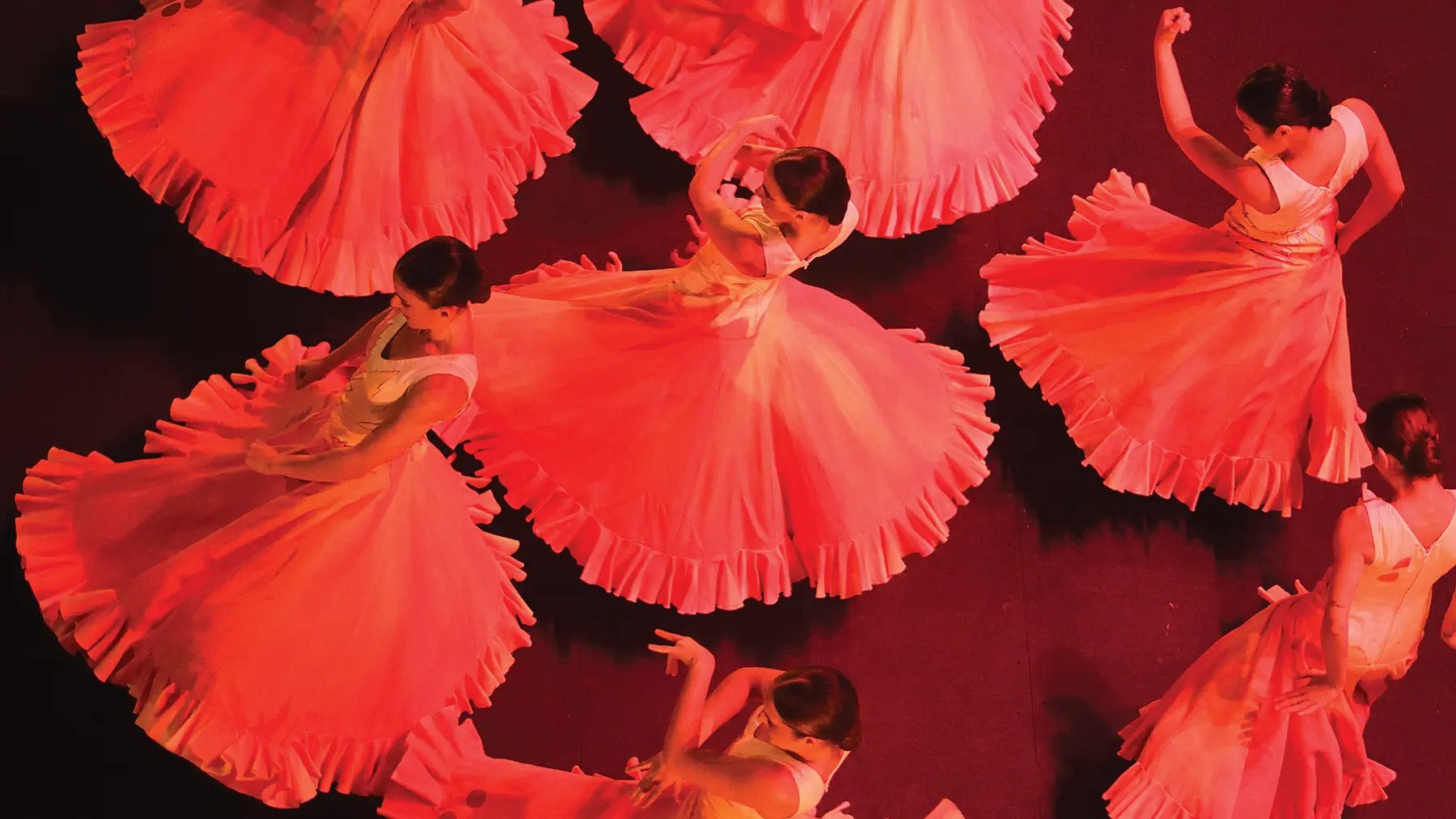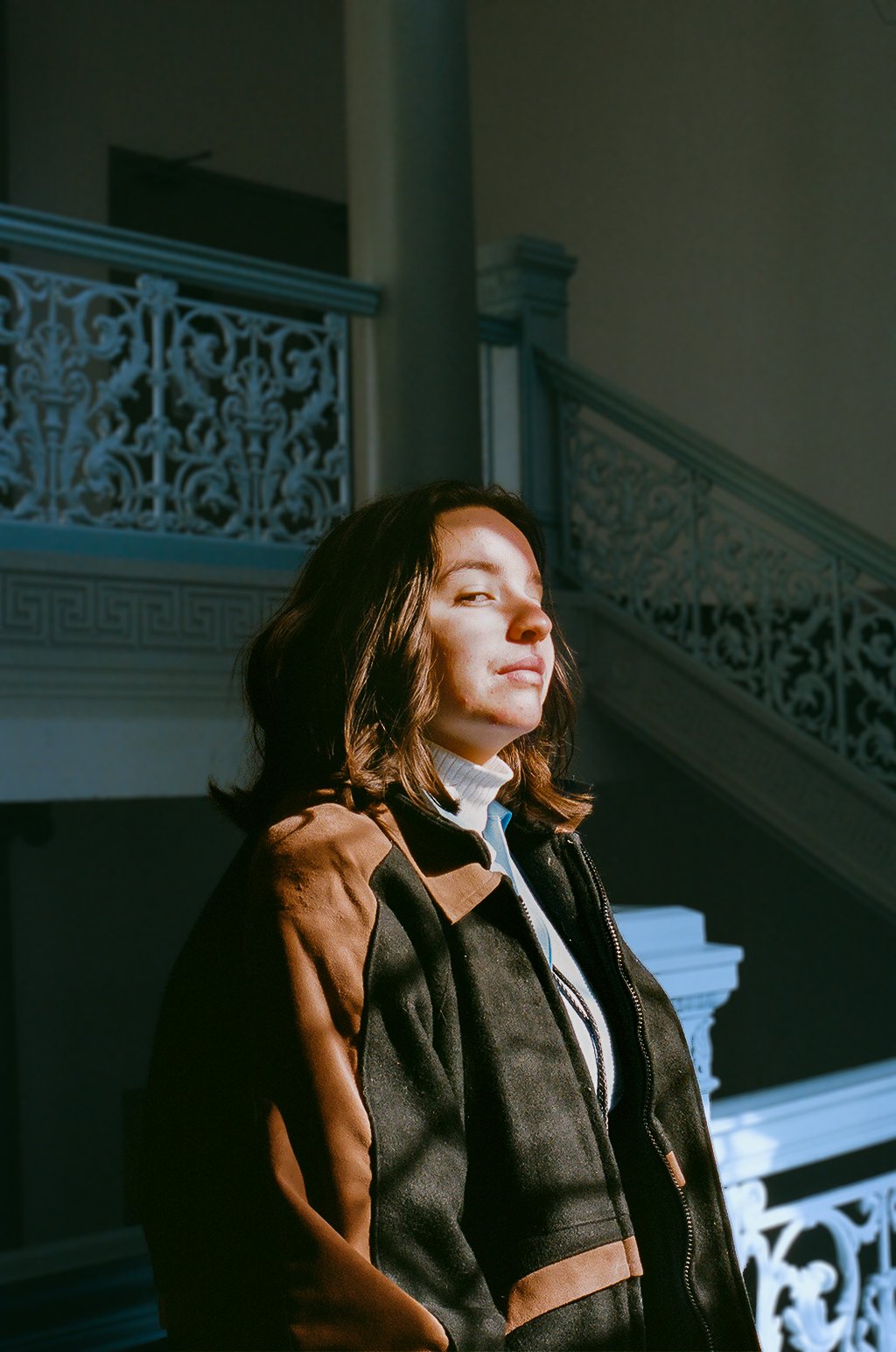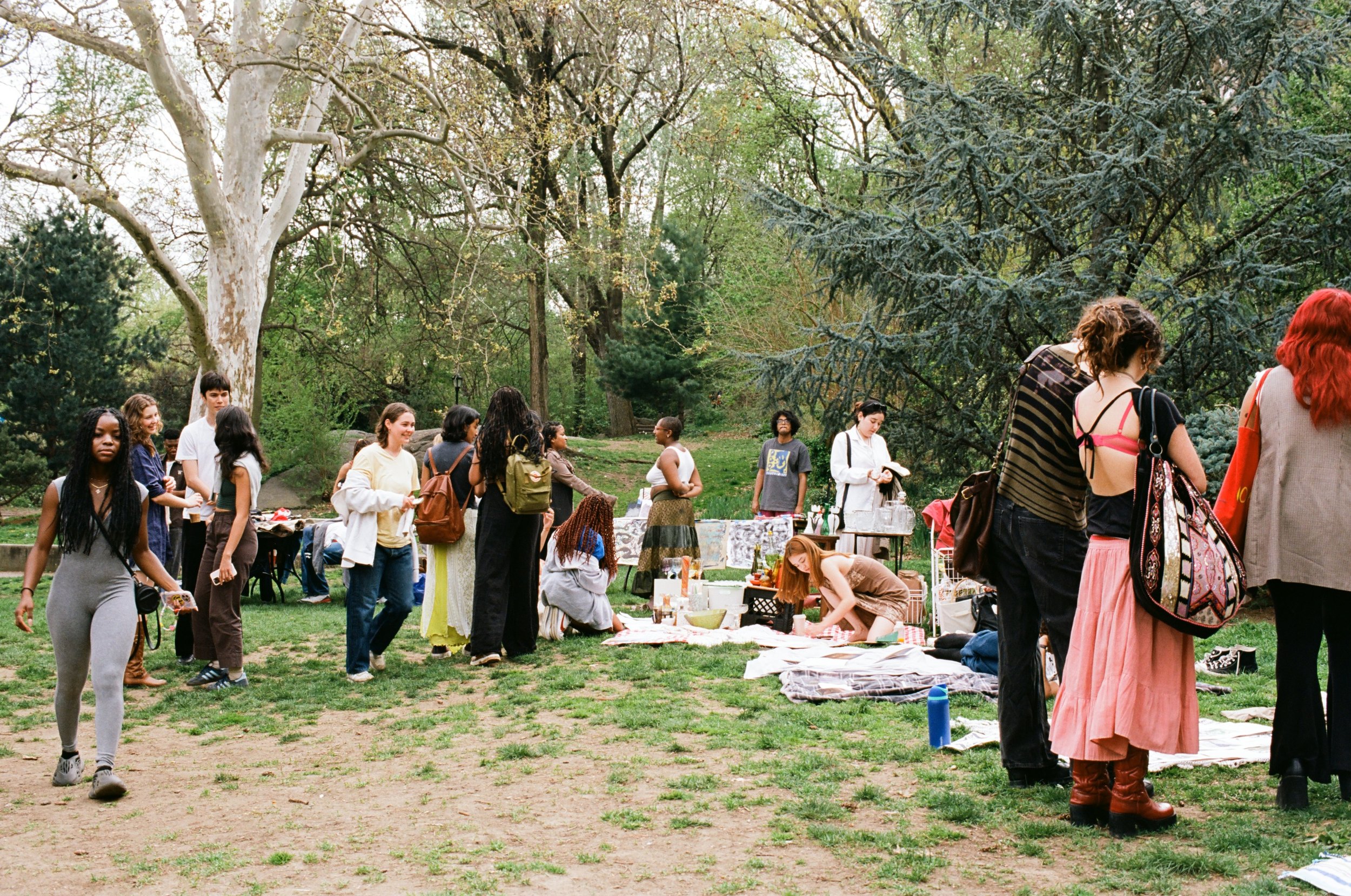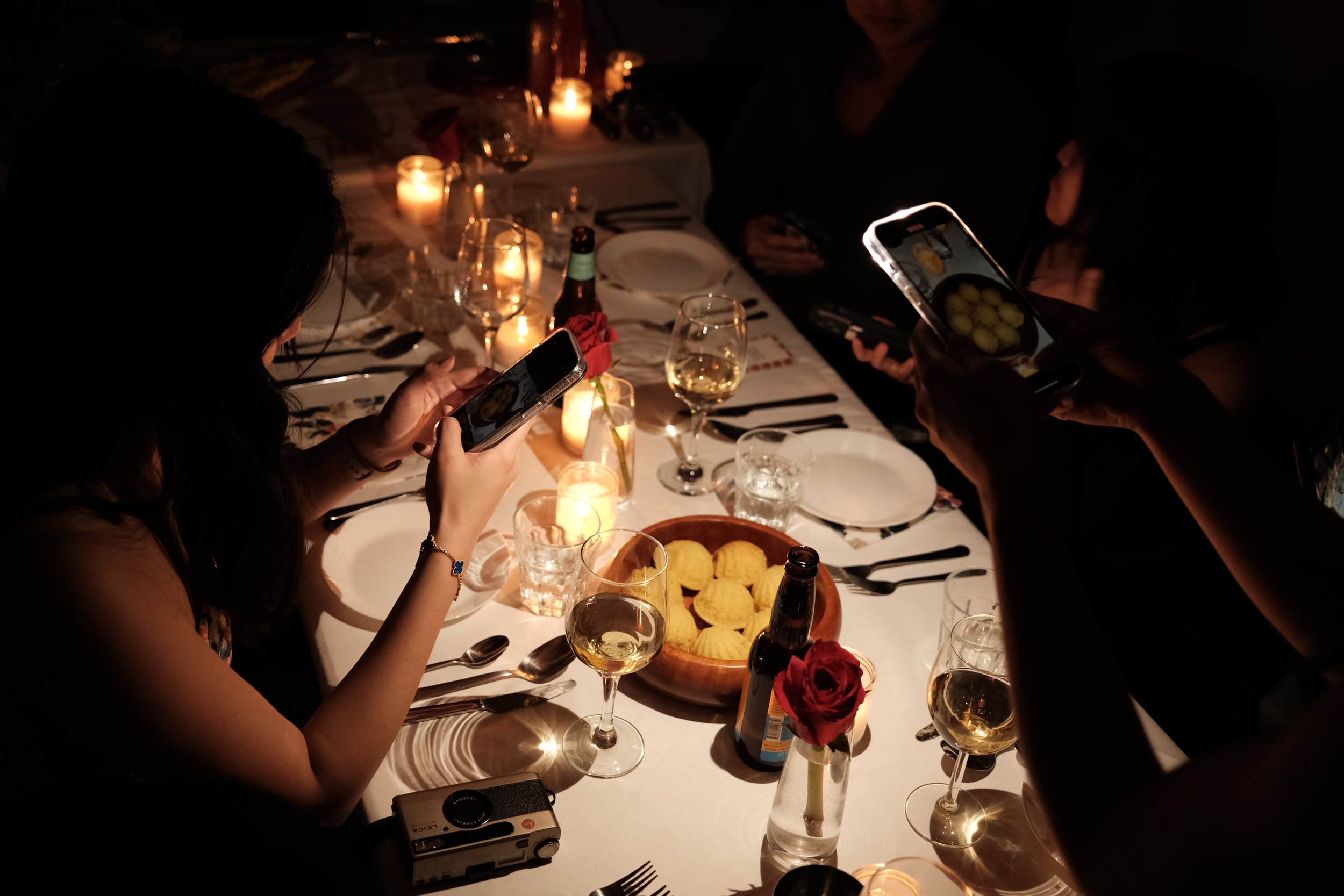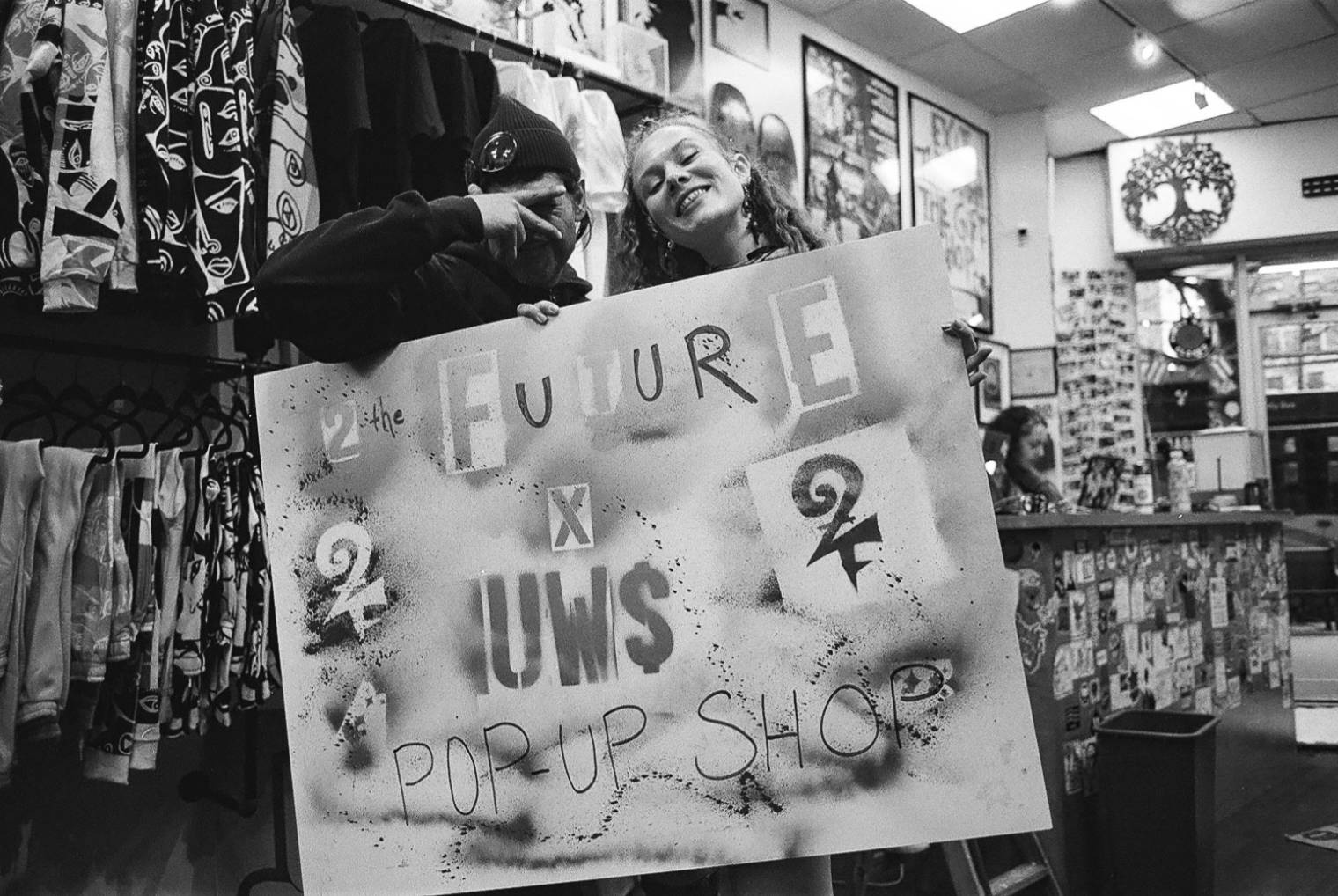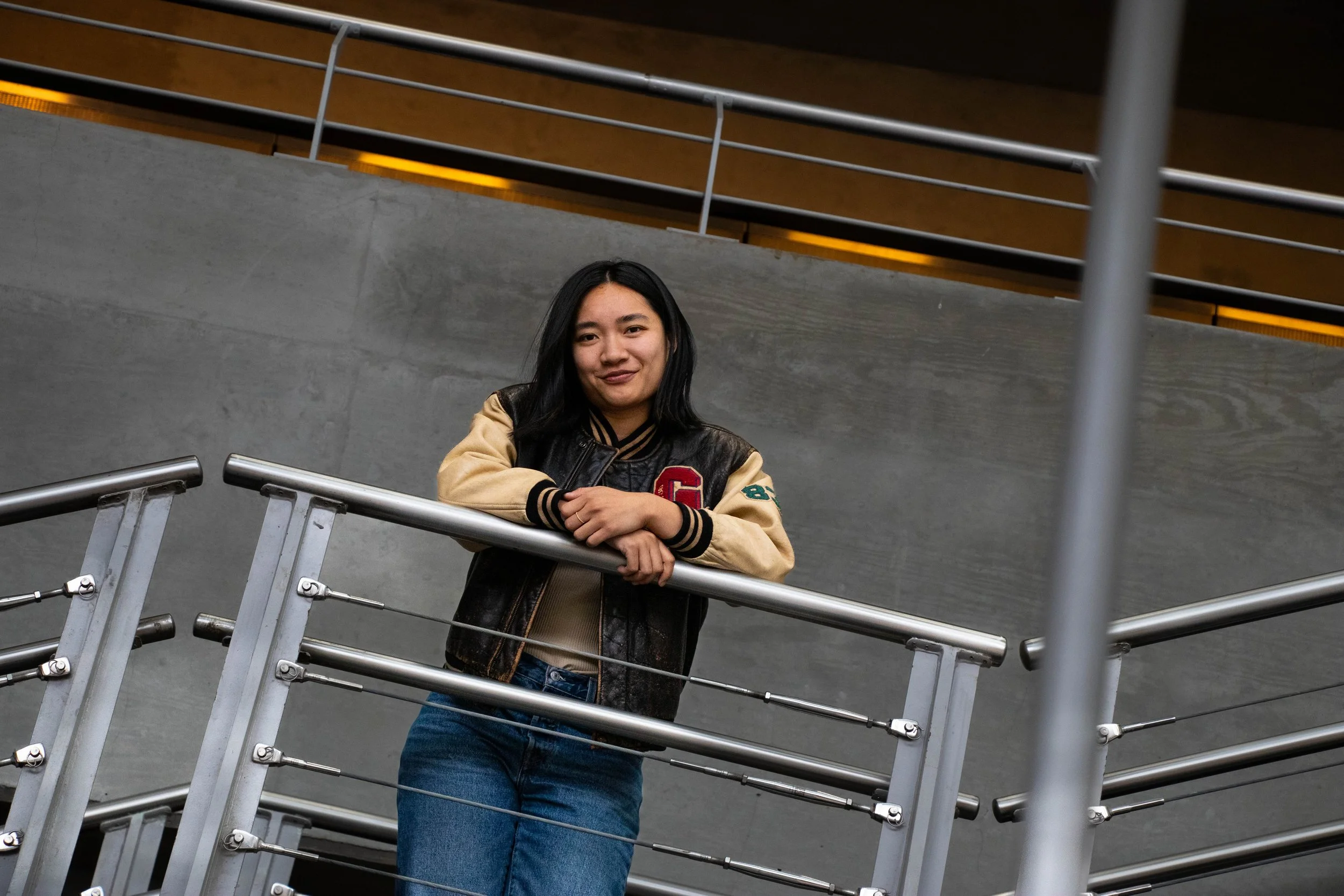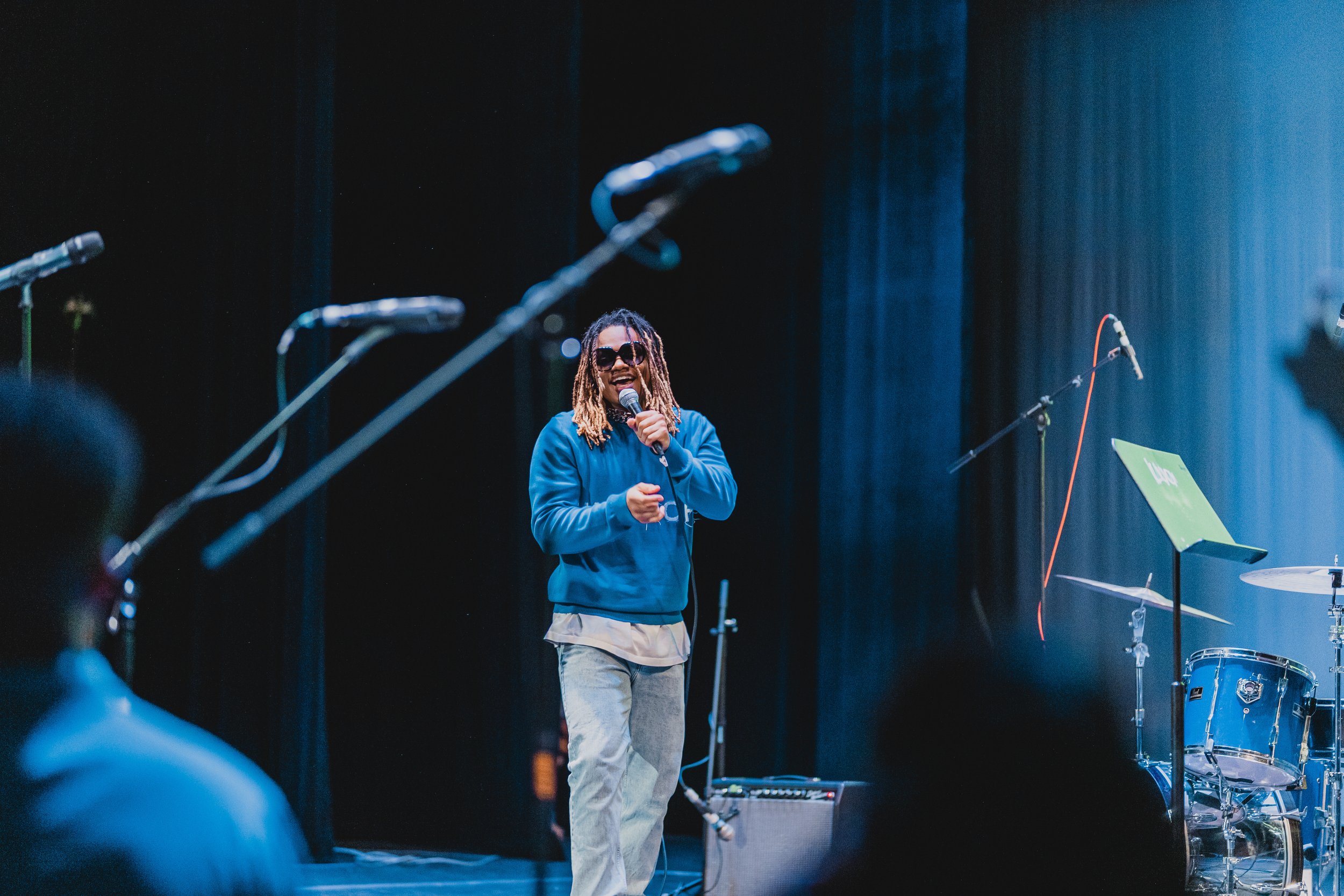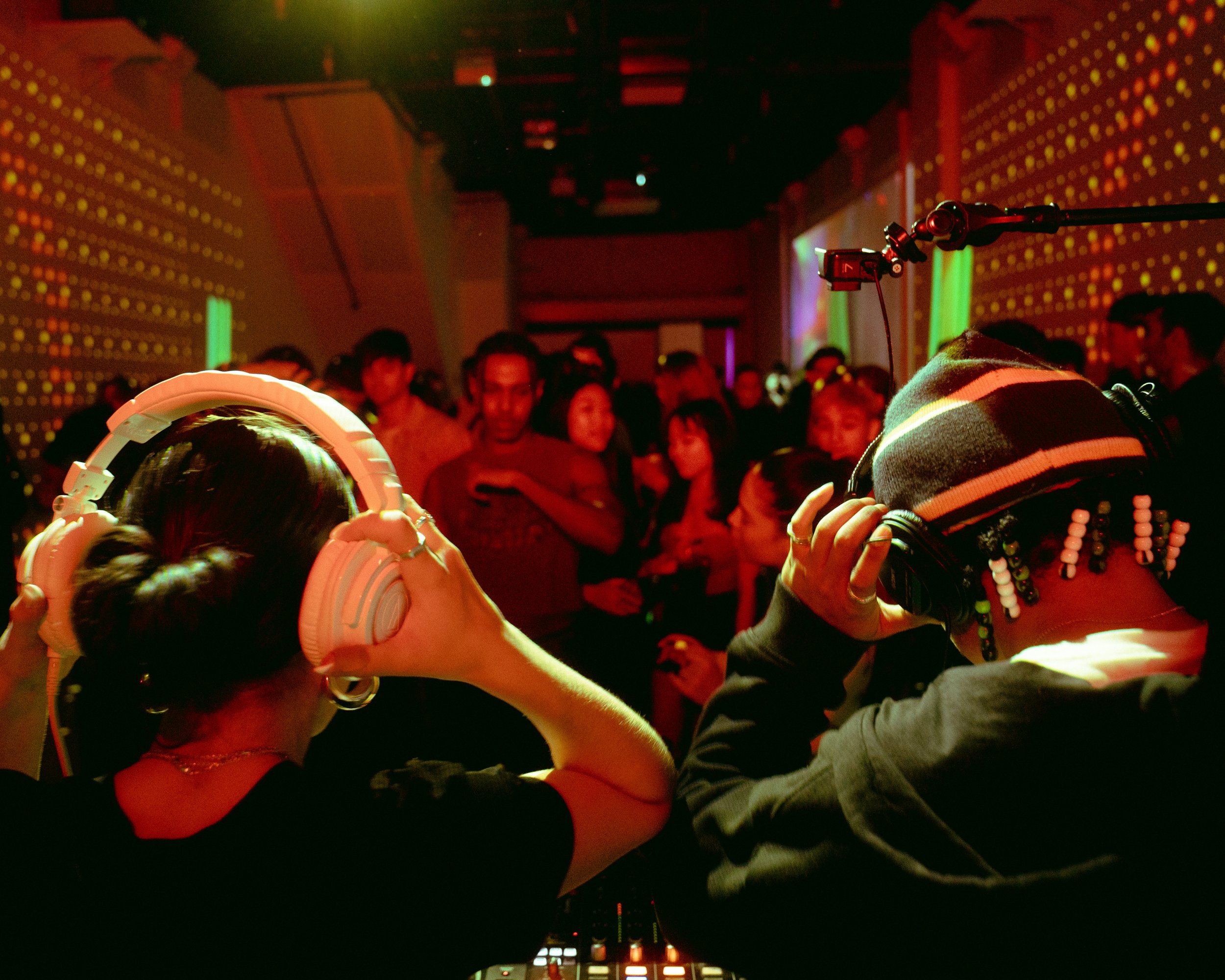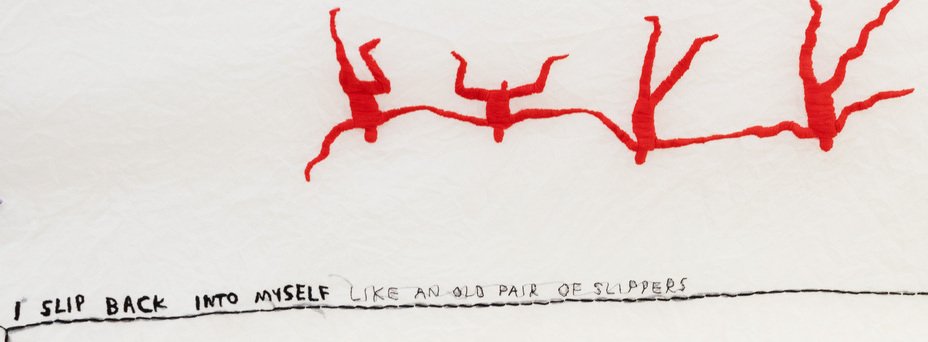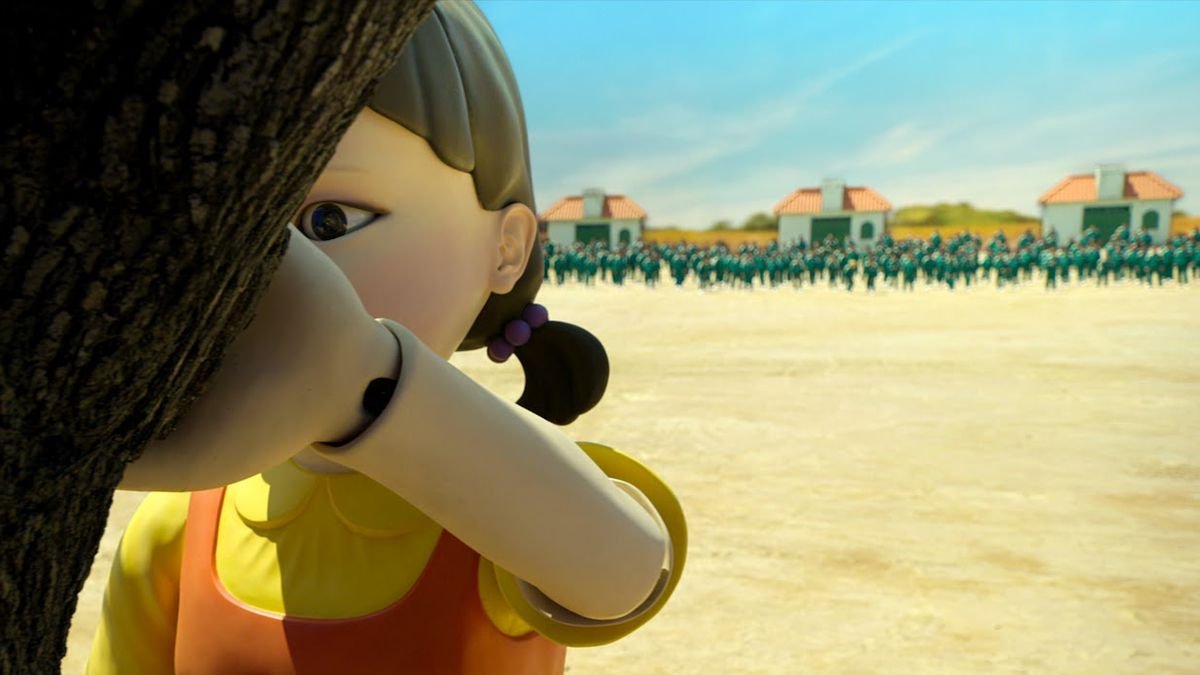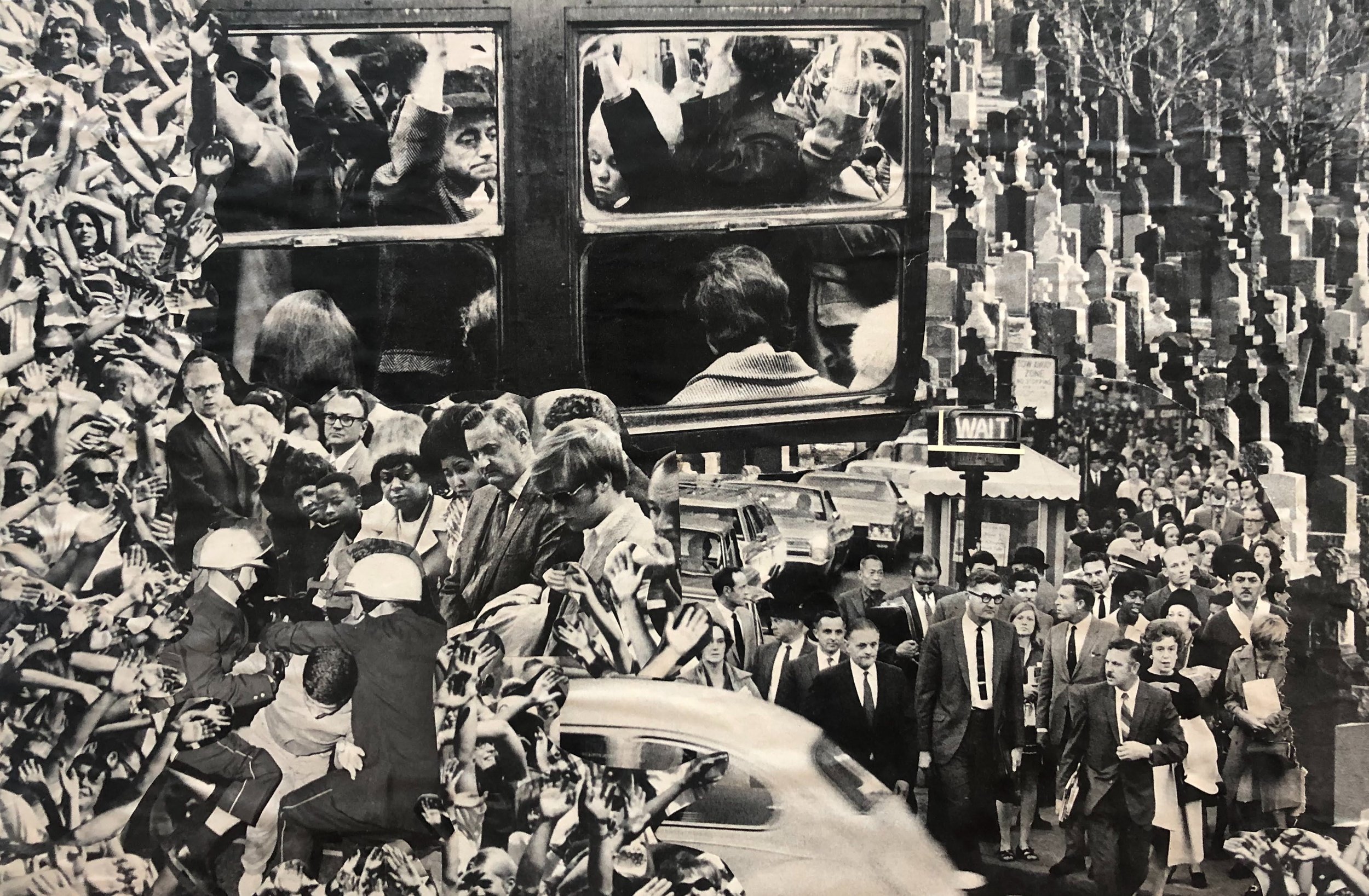Written by Taylor Elizabeth Bhaiji
Eva Brander Blackhawk is a junior in Columbia College studying economics and anthropology. She is of the Western Shoshone Tribe based in Nevada.. Eva currently serves as treasurer for the Native American Council (NAC) at Columbia. She lives in Indigehouse, where she helps lead the application process in choosing the Native students who will live in the house. Eva uses collage art as a way to explore the many facets of her identity as well as the complexities of issues that our generation is forced to face, such as climate change and systemic racism.
On a chilly Thursday morning, Eva Brander Blackhawk answers my phone call with an enthusiastic hello. Her energy radiates despite our virtual connection, and we immediately jump into conversation. Through our hour-long chat, we take a deep dive into her artist work that reveals her identity as a woman, environmental activist, young adult, and Native American.
When asked about the role art plays in her life, Eva emphasizes the significant part that art plays in exploring and understanding the different facets of her identity that often complicate her self-perception. She explains that every aspect of her identity may not be so apparent in her art pieces or serve as the centerpiece of her artwork, but her art is inextricably linked to who she is.
Despite her experience, Eva is hesitant to call herself a native artist. She grew up in Connecticut, very far from her tribe. Her father is Native American, but her mother is from Denmark. As a result, she doesn't always feel the most connected to her Native culture. Eva notes, however, that “we should be able to be an artist in whatever way we want without expectations whether we decide to include all parts of our identity or not.”
Though she is Native American, she has grown up in majority white spaces. She believes that art opens a door for her to share her perspective and explore her identity. Eva states that “I am often overlooked as a Native woman, but my art allows me to override these limitations.” She believes that art is a tool for processing, and in her life, she uses it as a way to cope with her daily experiences and find a way to synthesize her thoughts into artwork. Eva describes art “as a deeply human activity; it’s something we can all share, so for me, art is a way to build community and start conversations.”
Eva believes that “we are in this age where we are constantly reminded of this impending doom caused by humans that has led to climate change, pandemics, racial oppression and globalization. We are left treading water hoping to not drown from all of this ominous information.” She is constantly asking herself questions about what to make of our government, how does her Native American identity fit into the future of our nation, and what does it mean to be a woman right now. Luckily, art has become an outlet for her to process today’s world, to reflect on the past as well as envision the future.
Eva’s main medium is collage, which she describes as a process of creating small unique worlds that allow her and her viewers to envision how they want the world to look. Collage can either serve as a form of escape or blueprint for a better place. She first encountered collage in her senior year of high school. She says that she was captivated by Life magazines from the 1960s that her school had. “I saw a repetition of women being objectified and placed in a box as the ‘housewife,’ and I saw little to no indigenous representation. These are still issues that we see in the popular magazines of today.” She is interested in where our collective consciousness as a society has progressed and what has remained the same.
Eva’s creative process begins with a stack of 1960s Life and National Geographic Magazines. Over the years, she has collected folders full of images that she has pulled from these magazines. When Eva makes collages, she goes through her collection to find images that speak to her at the moment, then she finds a theme that emerges across all the images. She reflects on the types of images she often collects and uses: “I always use nature imagery, but the 60’s magazines often add some satire to my work, especially in terms of gender. The magazines are full of housewife ads such as how to please your husband.” She noticed cigarette ads were particularly gendered by making a cigarette look more masculine or feminine depending on who it was being marketed to. “As a woman, I find it interesting to look at these ads and examine the extent to which the world has both changed and not changed since the 1960s.”
When discussing the content of the magazines, Eva emphasizes that she has struggled quite a bit with the fact that there aren't really Native Americans in the magazines. She notes that she has only found three ads including Natives in the hundreds of magazines that she has looked at over the years.
However, one of her recent projects utilizes the few images of Natives that she found. One Life magazine reported on the 19-month long Occupation of Alcatraz by Native Americans in the late 1960s and early 1970s. During the occupation, Native American people from all different tribes came together and occupied Alcatraz Island under the Treaty of Fort Laramie that says that unused federal land must be returned to the Native Americans. Eva says it was a momentous moment in history for Native Americans that made national news. “Even the fact that it was covered in Life magazine is amazing because that's something that rarely happens for Native Americans.”
Eva observes that narratives about indigenous people often place them in the past. “With the Alcatraz piece, I wanted it to be spacey and futuristic. It's a little unclear if the images are from this planet or another. In the news today, we hear so much talk about space travel and colonizing other planets, but I think that’s an issue that needs to be viewed from an Iindigenous standpoint. To me, it also very much relates to climate change and globalization. How do our identities change when we're in unfamiliar and strange places? How do you maintain cultural integrity when settling in these foreign locations?”
Eva usually shares her art with her friends and family through her Instagram account. @Evascollectionofart. She explains that art is something that she has done more for herself rather than as something to show to an audience. Eva reveals that “I'm hesitant to fully claim the title ‘artist’, but it's something I love to do.”
Eva tells me about one interaction on social media that left her speechless: “I had a crazy moment on Instagram when Patricia Norby, the first Native American curator at the Metropolitan Museum of Art, messaged me on Instagram and bought a collage.” Patricia Norby has opened a lot of doors for the Indigenous community at Columbia. Recently, she invited the members of NAC to help on the new Water Memories exhibit at the Metropolitan Museum of Art and they were given credit by having their names on the wall text of the exhibit. Eva is very grateful for the work Patricia does and her repeated kindness and mentorship.
When asked about Indigenous spaces on Columbia’s campus, Eva could not think of any spaces on campus for Indigenous students other than Indigehouse. That being said, Eva emphasizes that “the indigenous community on campus is very strong and is made up of incredible students and has had such a great impact on me. My Indigenous friends have helped me find confidence in my identity and I honestly don’t know what I would do without them.”
Beyond just the students, Eva does bring up the issue of limited Indigenous faculty and how that plays a role in the lack of art space for Indigenous students. She explains that it is hard to find Indigenous mentors, much less Indigenous art mentors that can help support young Indigenous artists. Eva studies anthropology in order to study Native American history and issues, and she has been particularly grateful to Professor Audra Simpson. She emphasizes that Professor Simpson has been incredibly helpful in her journey through college. Eva is currently taking Professor Simpson’s seminar on Indigenous Feminisms, which she highly recommends.
When asked if she felt that the Columbia community supported its Indigenous students and their culture, she was quick to respond with “No, not really.” She notes the excitement in the Indigenous community surrounding the approval of Indigehouse that happened just this year even though NAC originally applied for the brownstone in 2015. Eva explains that before Indigehouse, it was difficult to access adequate meeting space around campus. This is the first time the indigenous community has had a designated space on campus where they can connect with each other and hold events.
However, Eva passionately states that the Columbia administration itself does little to nothing to support the indigenous culture. The indigenous events that happen on campus are almost solely organized by the students, although supplemented by Multicultural Affairs.
Eva hopes to see a department specifically for indigenous studies one day. Right now, the university only offers a major in ethnicity and race studies with a specialization in indigenous studies. Compared to other Ivy League schools, Columbia falls short in their support of their indigenous students at all. Eva’s father is a professor at Yale, where they host a week-long show called Yale Indigenous Performing Arts Festival to celebrate indigenous art.
At Columbia, there is little comparable support for the indigenous community. For instance, the Indigehouse budget for the entire academic year is only a couple hundred dollars . With that amount of money they struggle to afford snacks for meetings and new furniture to furnish the house. Eva emphasizes that they are working very hard to grow their presence on campus, but she doesn’t think that this effort should completely be put on the shoulders of the students. She says:“We need more faculty that can support us, we need a more representative curriculum, we need more indigenous students!”
Eva has hope that the student body can bring awareness to the indigenous community, culture and issues. She believes that the administration will do nothing unless the students pressure them into it. “The biggest thing the student body can do is educate themselves on indigenous issues and listen to their fellow indigenous students to learn more about our culture and the issues we face. The student body should be having more uncomfortable conversations about important indigenous issues, because until we face these problems, nothing will change.”
Please check out the indigenous organizations that we have on campus! We have Native American Council (NAC), Mālama Hawai’i, and Indigehouse. Look out for events for Native American Heritage Month, which is this month. Mālama Hawai’i has a lot of performances throughout the year. We have the powwow in the spring. The best place to follow the indigenous community and see what they are up to would be on Instagram.
Eva Brander Blackhawk’s Instagram: @evascollectionofart
Native American Council Instagram: @nativeamericancouncil
Mālama Hawai’i Instagram: @malamahawaiicu

